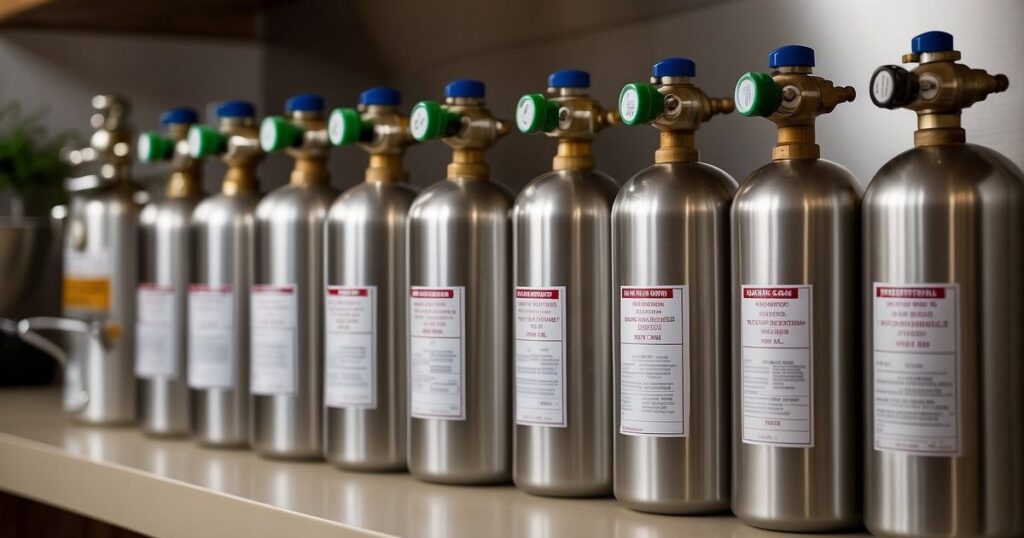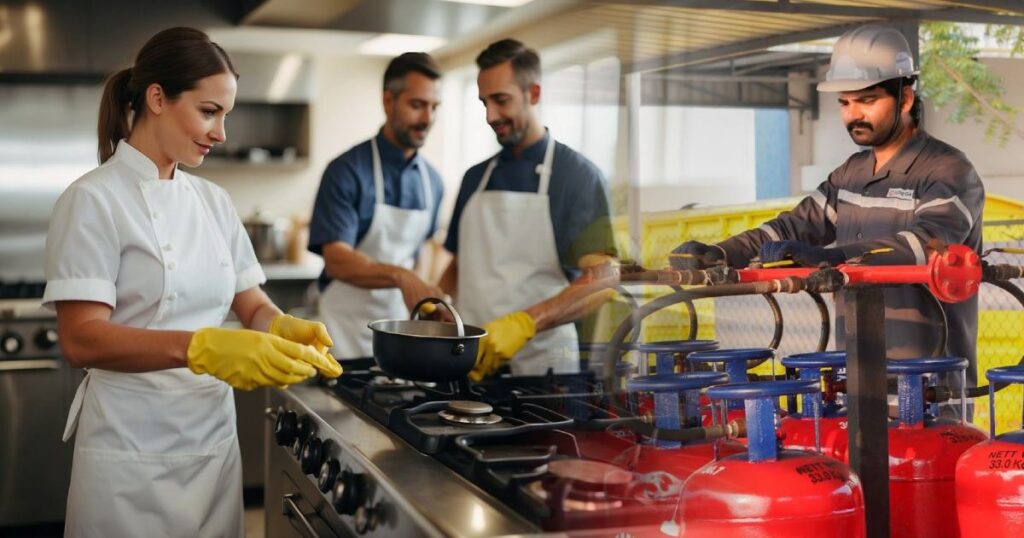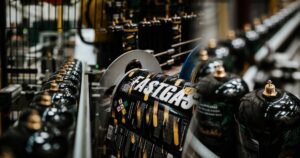Culinary Gas Cylinders: Essential Guide for Home Chefs and Restaurants
FastGas Blog
Culinary gas cylinders are essential tools in commercial and home kitchens, offering a reliable and efficient heat source for various cooking applications. Utilising liquefied petroleum gas (LPG), these cylinders allow chefs and cooks to manage precise temperatures, ensuring optimal cooking conditions for everything from simmering sauces to searing meats. The convenience and portability of LPG cylinders also make them a preferred choice for cooking in outdoor settings or areas where natural gas lines are unavailable.
In addition to cooking, specialised gas cylinders contribute significantly to culinary creativity and beverage service. Nitrous oxide cylinders, for example, are commonly used in preparing whipped creams and foams, enhancing the texture and presentation of desserts and drinks. The versatility of culinary gas cylinders in the kitchen and the wider hospitality industry underscores their value in achieving culinary excellence and customer satisfaction.
Key Takeaways
- Culinary gas cylinders provide precise heat control for diverse cooking needs.
- Specialised gas cylinders, such as nitrous oxide, facilitate creative culinary creations and beverage service.
- The portability of gas cylinders makes them suitable for indoor and outdoor use in various culinary contexts.
Types and Applications of Culinary Gas Cylinders
Culinary gas cylinders are essential tools in professional kitchens, enabling chefs to utilise various gases like propane and butane and specialised options for creative and efficient cooking techniques.
Propane and Butane Cylinders
Propane and butane are common forms of Liquefied Petroleum Gas (LPG) used in the culinary industry. They are highly efficient and portable, making them ideal for your restaurant’s outdoor cooking setups, such as BBQs and patio heaters.
- Propane Cylinders: Known for their versatility, they’re often labelled as Calor Gas or Patio Gas. Propane’s low boiling point makes it suitable even in cold weather, which is perfect for operating outdoor cooking stations or heating areas.
- Butane Cylinders: Preferred for their ease of use and storage, these are typically used in less intensive culinary setups like camping stoves or small outdoor catering events. Butane has a higher boiling point than propane, so it’s more commonly used in warmer climates or indoors.
Both propane and butane cylinders come in various sizes, from small canisters for camping stoves to larger tanks for restaurant-grade equipment, ensuring you have the right amount of gas for your culinary needs.
Specialised Gases for Culinary Techniques
Your culinary creations can achieve new heights with the use of specialised gases such as nitrogen, carbon dioxide, and nitrous oxide. These gases aid in both the precision and presentation aspects of culinary arts.
- Nitrogen: Often used by chefs to instantly freeze ingredients and create unique textures, nitrogen is crucial for techniques like cryo-cooking.
- Carbon Dioxide: In the form of dry ice or gas cylinders, carbon dioxide is used to carbonate beverages, adding that fizz to your signature drinks without diluting the flavour.
- Nitrous Oxide: A key component in whipped cream chargers, which allow for rapid infusion and whipping of creams, providing both efficiency in preparation and finesse in presentation.
FastGas cylinders can enhance the capabilities of your kitchen, whether you aim to quick-chill ingredients or whip up desserts with perfect peaks. These culinary gas cylinders make precise and rapid techniques accessible, helping you elevate the dining experience with impeccable execution.
Safety, Usage, and Customer Service
In culinary operations, the proper use and maintenance of gas cylinders are paramount for both safety and efficiency. Your approach to these elements affects your restaurant’s overall energy, speed, and quality of cooking.
Operating Gas Cylinders with Safety and Efficiency
When you operate gas cylinders, it’s essential to prioritise safety alongside efficiency. Adams Gas recommends the following best practices:
- Check for Leaks: Regularly inspect connections and hoses for leaks using soapy water.
- Ventilation: Ensure adequate ventilation in the area to prevent gas buildup.
- Storage: Store cylinders upright and in a well-ventilated space, away from extreme temperatures.
- Transportation: When moving cylinders, do so with care to avoid knocks and falls that could lead to damage.
Following these steps not only maintains high safety standards but also helps preserve the energy efficiency of your gas equipment like ovens and cooktops, enhancing the speed of your cooking process without compromising safety.
Maintenance and Customer Support
Maintenance of gas cylinders and related equipment is crucial for uninterrupted service in your restaurant. A comprehensive maintenance schedule should include:
- Regular servicing: Have your gas systems inspected by a qualified technician at least annually.
- Immediate repairs: Address any issues immediately to avoid disruptions in your service.
Concerning customer service, working with a supplier that offers prompt and reliable support is vital. Suppliers such as Adams Gas provide extensive customer service to address your needs rapidly, ensuring minimal downtime in your restaurant’s operations. This commitment not only keeps your energy usage optimal but also sustains the efficiency and speed required for high-quality cookery.
Frequently Asked Questions
When seeking high-quality culinary gas cylinders, it’s essential to prioritise purity, reliability, and the right specifications for your culinary applications.
Where can I buy high-quality culinary gas cylinders?
You can purchase high-quality culinary gas cylinders from speciality gas suppliers, restaurant supply stores, or directly from manufacturers who provide food-grade gases. Ensure they meet industry standards for food safety.
What should I consider when choosing a food-grade CO2 cylinder?
Selecting a food-grade CO2 cylinder requires attention to certification for food safety, appropriate cylinder size based on usage volume, and compatibility with your existing equipment.
How can I find a reliable seller of culinary gas cylinders in my area?
To locate a reliable culinary gas cylinder supplier in your vicinity, search for a gas provider, such as FastGas, with positive reviews, good customer service, and a track record of supplying to the culinary industry.
What are the safety considerations for storing and using cooking gas cylinders?
Safety is paramount for cooking gas cylinders; store them upright in a well-ventilated area away from heat sources, ensure all connections are secure to prevent leaks, and regularly check for expiration dates.
How do I compare prices for 19kg propane gas refills nearby?
To compare prices effectively, request quotes from multiple suppliers, consider delivery fees, and determine if there are any ongoing service or rental contracts included with the refill price.
Are there specific culinary gas cylinders recommended for professional kitchen use?
Professional kitchens typically use food-grade gas cylinders tailored to their specific equipment, such as CO2 for carbonated beverages or nitrogen for Modified Atmosphere Packaging (MAP) – to ensure compatibility and adherence to food industry regulations.







